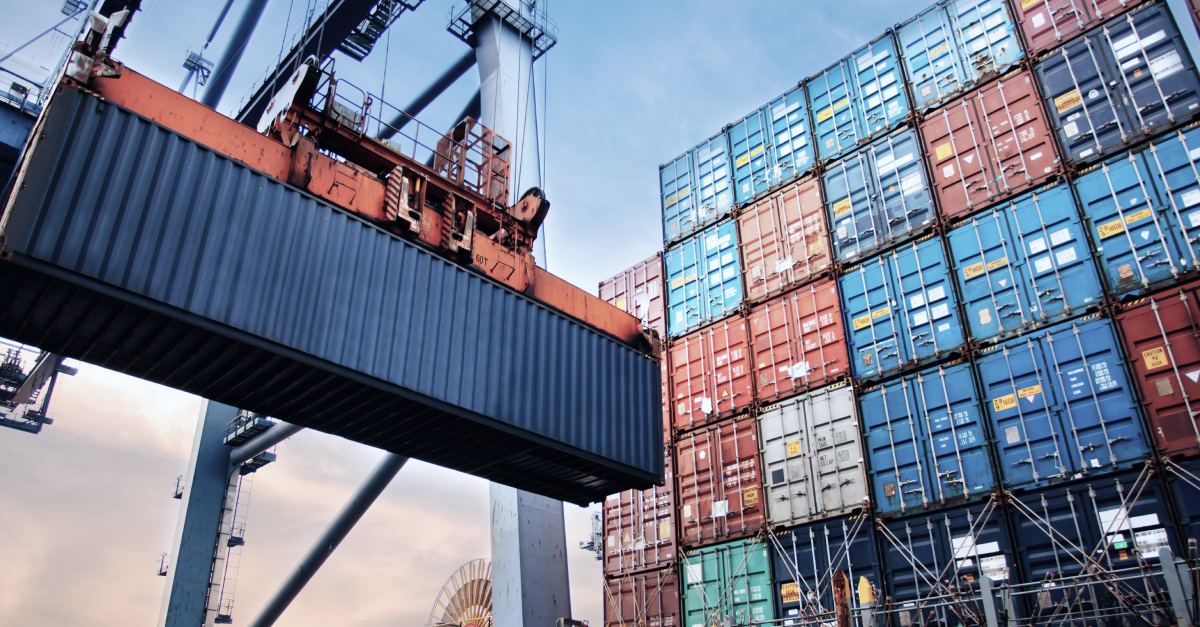Ongoing disruption in ocean freight container shipping has seen spot rates soar during May and June across the world’s major trades – but there are also implications on the long term market, especially for freight forwarders.
The Global Xeneta Shipping Index (XSI®), which measures all valid long term contracts in the market, fell by 1.7% in May to stand at 151.6 points. This took place at a time when spot rates have spiraled, surpassing the peaks seen during the Red Sea crisis earlier in 2024 on major trades from the Far East to North Europe and the Mediterranean as well as the US West and East coasts.
While the relatively flat Global XSI® suggests a long term market which is insulated from the current chaos, that very much depends on your viewpoint.
For example, a long-term rate is rendered largely meaningless if you can’t ship your goods on it, and that is the situation for some shippers and freight forwarders who are being forced onto the spot market – with some paying an additional premium to secure space for their containers on board ships.
During an ocean freight container capacity squeeze, the question is not only ‘what rates can I secure on a long term contract?’, it is also a case of ‘can I even move my cargo on a long term contract?’.
No business can be completely shielded from the impact of supply chain disruption, but for larger shippers with rates negotiated directly with carriers, the answer to the latter question is more than likely ‘yes’, but for smaller shippers and freight forwarders the situation will be far less certain.
Freight forwarders feel the pinch
In the scenario where goods are still moved on a long term contracts, experiences can still vary significantly, and that is seen in the spread of rates being paid by shippers and freight forwarders.
For example, the XSI® sub index for Far East Exports posted a slight 0.7% increase in May to reach 161.3 points, suggesting that all valid long term contracts are immune from the volatility of the short term market.
Once again, that very much depends on your viewpoint.
When looking at long term contracts signed within the past three months on the Far East Exports index, freight forwarders have seen an increase in rates compared to January. Meanwhile, shippers have been enjoying lower rates.
To put this shift in market dynamics into context using the Far East to Mediterranean trade, at the start of 2024 freight forwarders were getting long term rates around USD 540 per FEU (40ft equivalent shipping container) lower than shippers. They are now paying USD 850 per FEU more.
Why are freight forwarders paying more?
Before the escalation of conflict in the Red Sea in December last year, carriers would not have expected a scenario in 2024 where a reduction in available ocean freight container shipping capacity required them to prioritize some customers over others (as had previously happened during the height of the Covid-19 pandemic).
Yet, that is the situation the industry has found itself and most carriers have clearly chosen to prioritize relationships with shippers over freight forwarders.
That leaves some freight forwarders fighting to get any kind of long term rate from carriers – and even if they are successful, they will be paying more than shippers. These freight forwarders also face the prospect of being squeezed even further through surcharges and premium services to secure guaranteed capacity.
Relationships are tested in times of trouble
The relationships between carriers, shippers and freight forwarders become critical during times such as these when the spot market increases dramatically and long term rates do not follow suit.
The bigger the spread between long and short term ocean freight shipping rates, the bigger the risk of cargo being rolled.
Again, however, experiences may vary.
The biggest shippers who have rates at the lower end of the market will be more protected from the risk of containers being rolled due to carriers needing to maintain good relationships with their most important customers.
However, for smaller shippers and those shippers who use freight forwarders, the spread between the long and short term markets presents a more clear and present threat to their supply chains.
Nowhere is the growing spread between long and short term rates more evident than on the Far East to North Europe trade.
The XSI® sub-index for European Imports fell by 3.6% in May following an increase of 9.2% in April. While on the spot market, rates from the Far East to North Europe increased by 71% between 30 April and 1 June.
What next for the long term market?
The irony of the current situation is that, when viewed in isolation, the long term market appears to have stabilized at its post-pandemic level.
In the past seven months, the Global XSI® has remained within a range of 10 index points after posting 158.5 points in November 2023 and bottoming out at 148.0 points in January.
However, in the previous seven month period (April 2023 to October 2023) the Global XSI® index fell by 143.8 points as it continued its descent from the pandemic peak.
However, the reality is that markets and trades cannot be viewed in isolation because they are all part of a global network which is vulnerable to the toxicity of major black swan events, such as the conflict in the Red Sea.
In the short term it appears freight forwarders have felt the financial brunt of the disruption across ocean container shipping, as well as the increased threat of cargo being rolled.
However, if spot rates remain elevated when shippers – even the larger ones - enter negotiations for new long term contracts then they too could be looking anxiously at the short term market.
That could lead to increases on the XSI®, especially if the Red Sea diversions continue to cause major disruptions such as the current port congestion in Singapore to spread further and deeper across the global ocean freight container network.
Experiences may vary, which is why understanding the data across markets and trades is so important for every shipper and freight forwarder attempting to navigate ocean freight container shipping in 2024.






